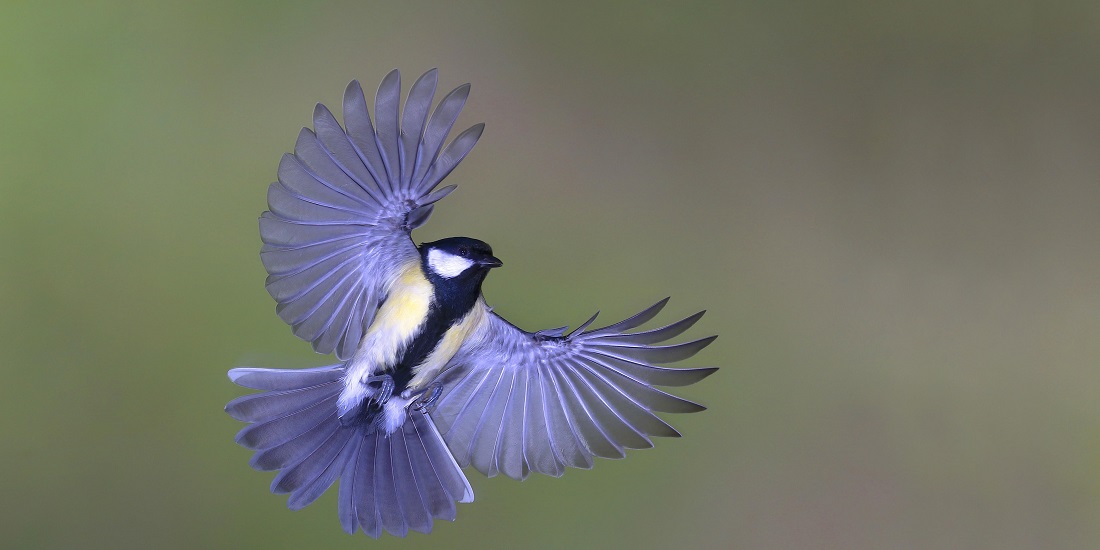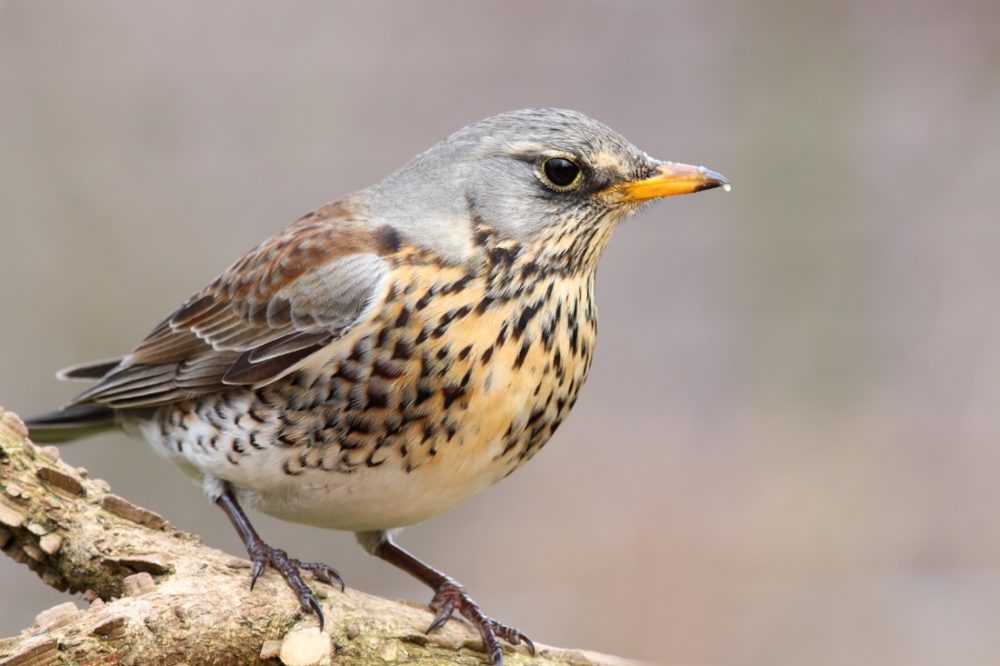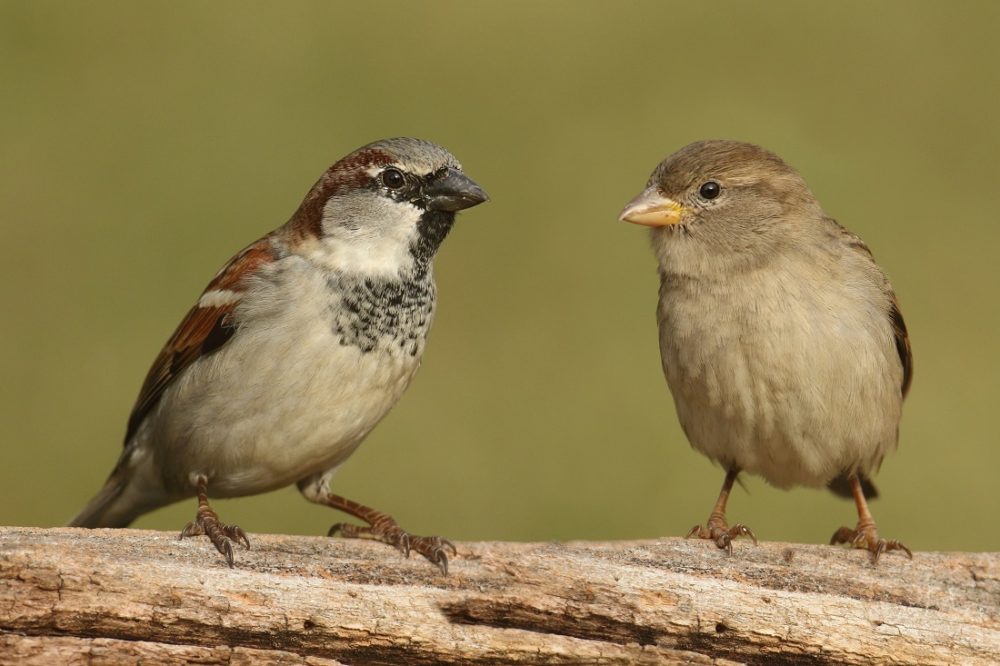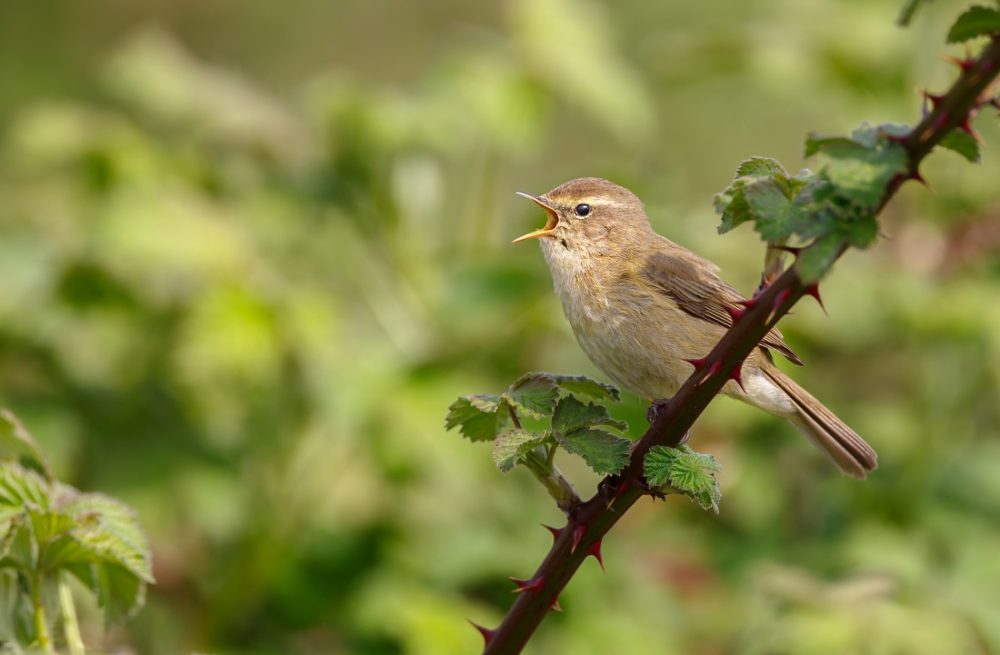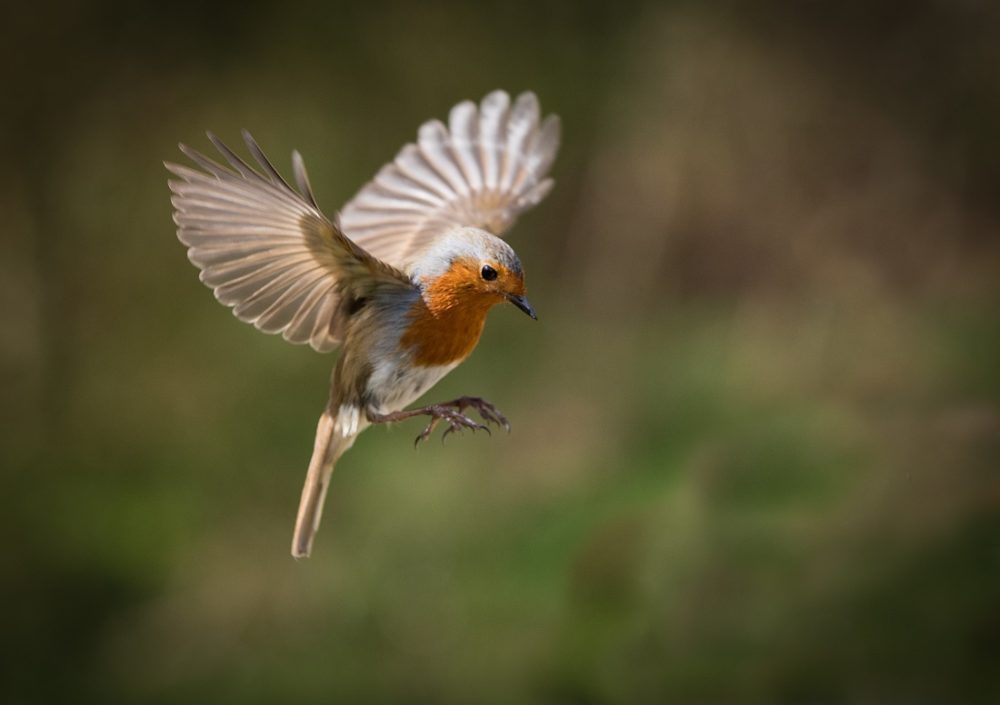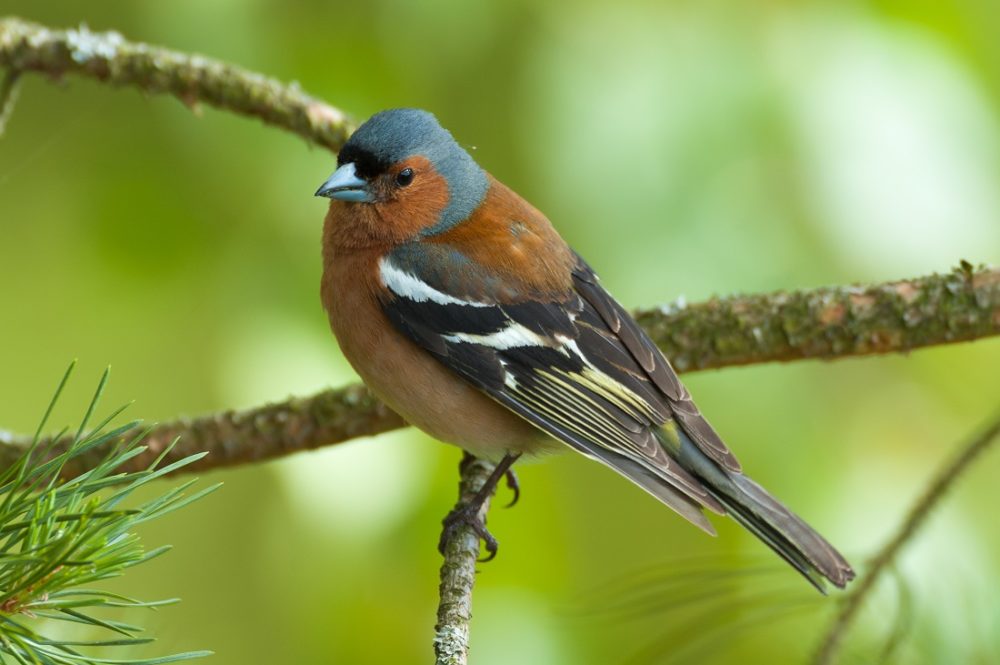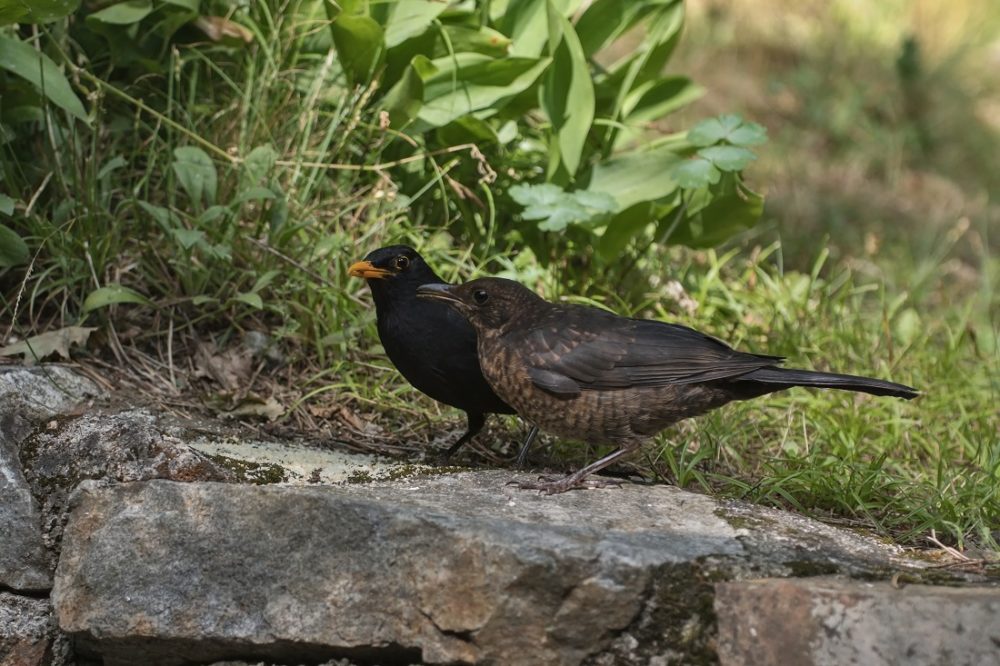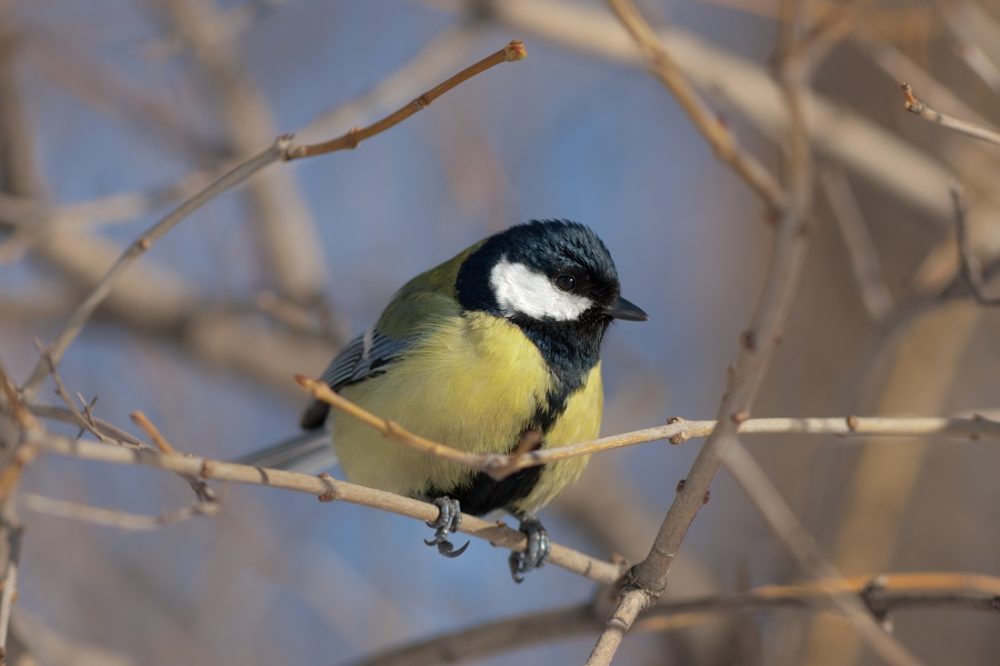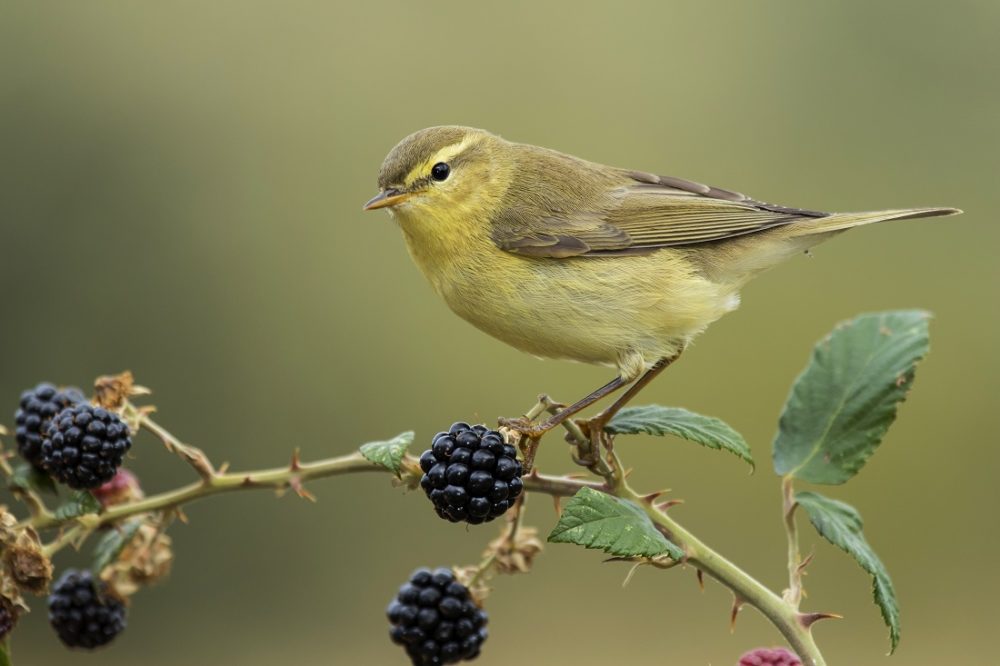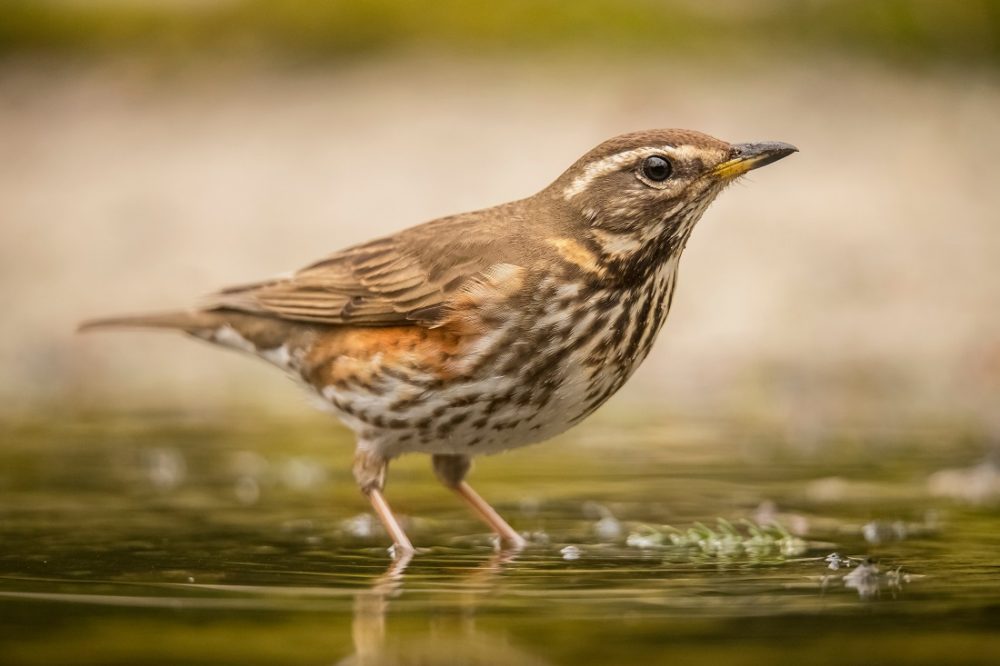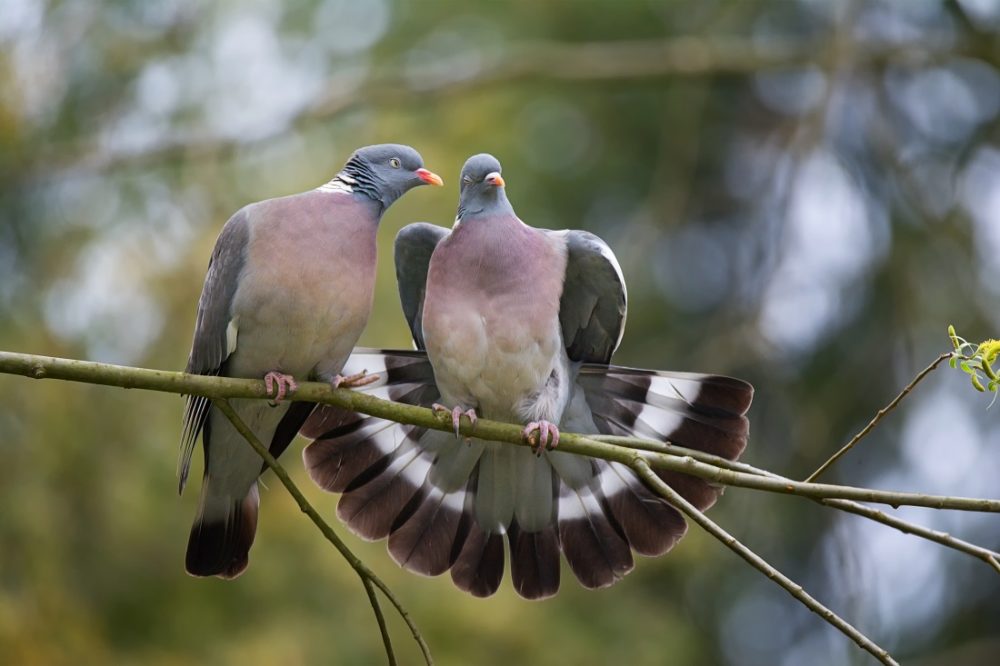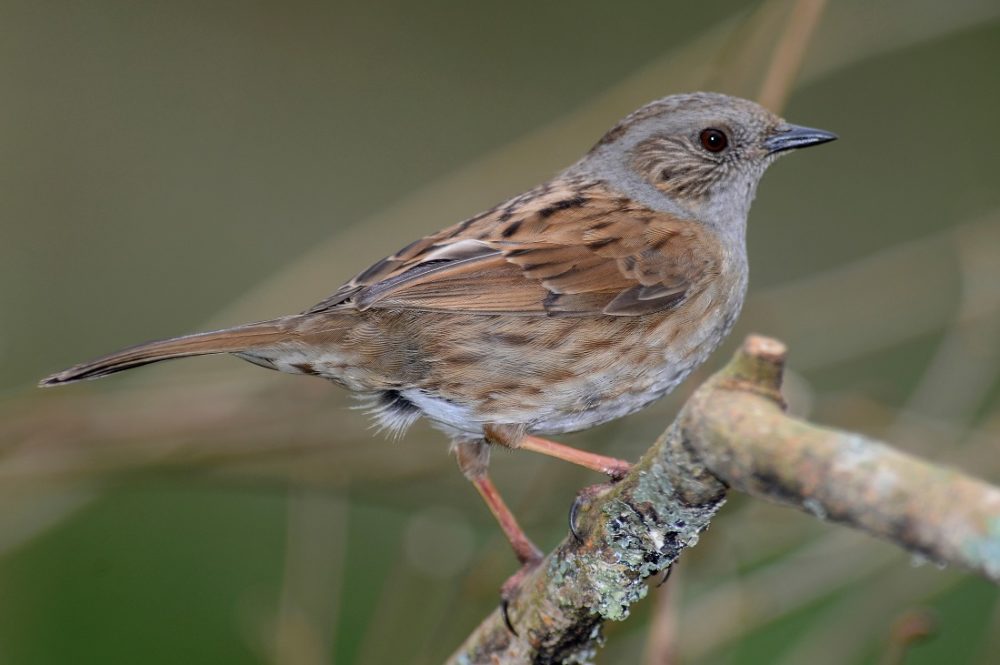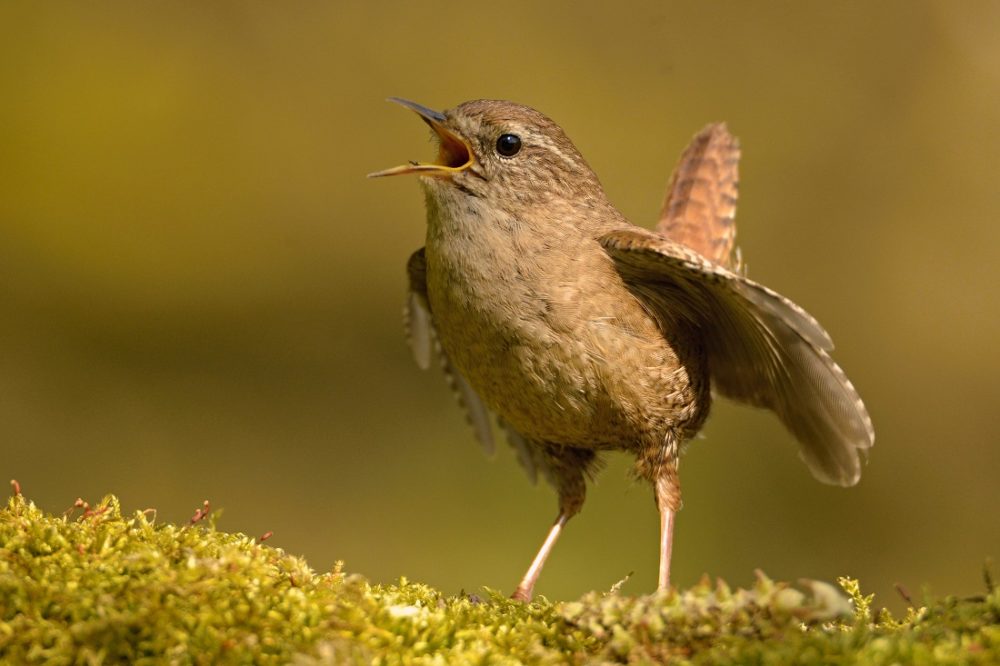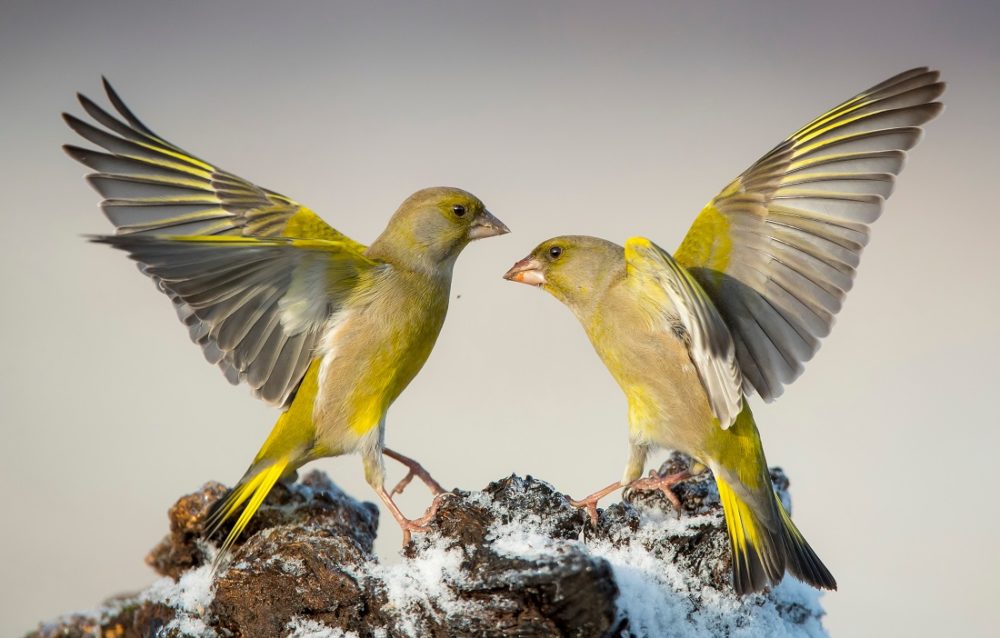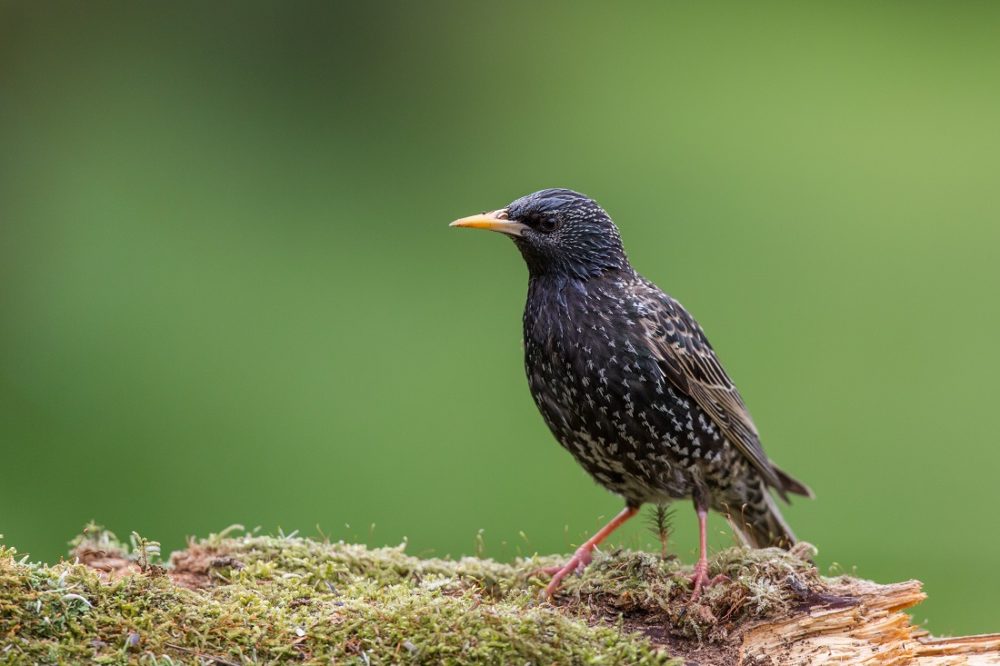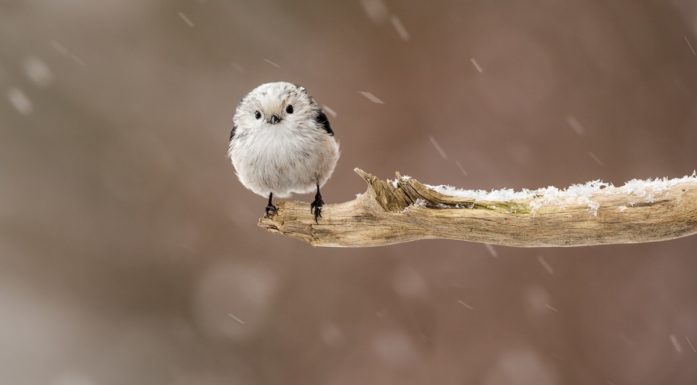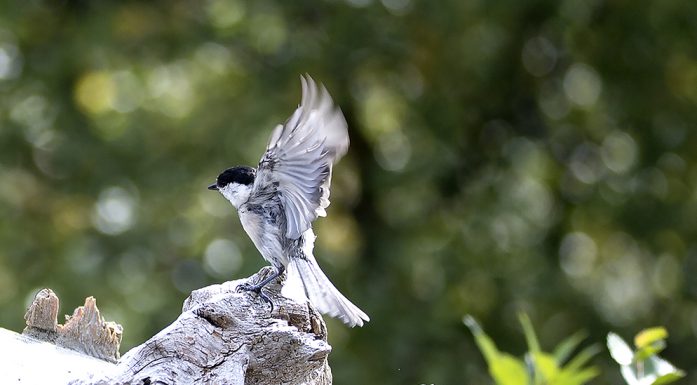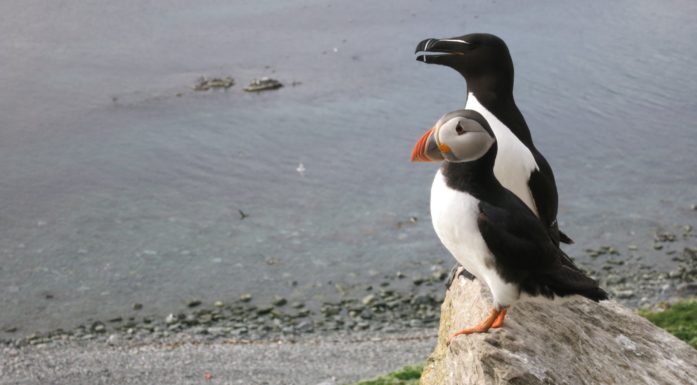Here’s how to recognize early spring birds
With some practice, you can learn to recognize some of the most common birds in northern Europe by their songs.
It might not be evident everywhere, but spring is coming. In lots of places, several birds have started singing or have been migrating northward to compete for a mate for the season.
But have you ever wondered exactly what bird is singing that particular song you recognize? Learn some of the most common species, and you’ll find that heading outdoors in the spring will be a rewarding and completely different experience.
A few tricks for beginners
The first step for a beginning birder is to pick out a few species to listen for. Many people find they learn faster by linking a bird song to a memory aid.
Below are some simple tricks to help familiarize you with bird species that are active right now. The selected species are all numerous and widespread, so you will most likely hear several of them even on a short walk.
Most bird species are at their most active from dawn to midday, so it pays to get up early. In the early morning, you also avoid the interference of traffic and other noise that increases throughout the day.
Fieldfare – think of a grumpy Donald Duck
The fieldfare (Turdus pilaris) is a very common bird, and by going outdoors early in the morning you’re almost guaranteed to be able to hear it. Its chattering song is familiar, but listen for the call notes mixed in with the chatter – a harsh, droning sound, like a rumbling engine – or the sound Donald Duck might make if he was unhappy.
Fieldfare. Audio recording: Terje Kolaas/terjekolaas.com, XC240219. Accessible at www.xeno-canto.org/240219. Published under a creative commons license.
House Sparrow – like a squeaky wheelbarrow
Most people will undoubtedly also hear the well-known ‘chirping’ of the house sparrow (Passer domesticus). Many of Norway’s hedges are home to this fellow. House sparrows don’t boast the most impressive song, but occasionally you’ll hear some trills, and this is a species that can be a good one to start with. With a little imagination you can picture a squeaky wheelbarrow wheel when you hear the song.
House sparrow. Audio recording: Terje Kolaas/terjekolaas.com, XC240216. Accessible at www.xeno-canto.org/240216. Published under a creative commons license.
Common chiffchaff – sounds like its name
The chiffchaff (Phylloscopus collybita) has really got its song going for the season. It has a simple onomatopoetic theme that is easy to recognize, a chiff-chaff in various lengths and series. Also in other languages – like the German Zilpzalp – the name of the species reveals its easily recognizable song.
Common chiffchaff. Audio recording: Hans Petter Kristoffersen, XC32094. Accessible at www.xeno-canto.org/32094. Published under a creative commons license.
European Robin – spring melancholy
Along with the chiffchaff, the robin (Erithacus rubecula) is one of the earliest spring songsters, and they can often be heard more or less undisturbed when they start singing, right around dawn’s first light.
Their song is wistful and can easily disappear in a noisy cityscape, with traffic and as other songbirds raise their voices throughout the morning. The tone starts off bright, and descends a bit indecisively in a rolling babble, ebbing off toward the end.
European robin. Audio recording: Terje Kolaas/terjekolaas.com, XC236516. Accessible at www.xeno-canto.org/236516. Published under a Creative Commons license
Common chaffinch – the big tease
Another specialty during this part of spring is the chaffinch (Fringilla coelebs). The song stands out because of its strength and sound. The chaffinch starts singing upon its arrival, which can be as early as the end of March, but as more individuals show up their singing activity increases throughout the month of April.
Notice the song’s falling character, combined with strong projections and a gradually increasing tempo, as well as a distinctive twist at the end. For example, imagine that the chaffinch is laughing noisily at another bird: ‘hahahahaha – spirrevipp!’
Note that the song endings can vary considerably, and sometimes they don’t happen at all.
Chaffinch. Audio recording: Terje Kolaas/terjekolaas.com, XC236448. Accessible at www.xeno-canto.org/236448. Published under a Creative Commons license.
Common blackbird – beautiful in a minor key
Blackbirds (Turdus merula) are also fairly easy to recognize by their appearance. At least the male blackbird is – the female is uniformly dark brown.
The blackbird can look similar to the starling and incidentally, both are good at imitating other species and sounds. The blackbird is perhaps better at adapting these sounds into the song as its own composed work. It sings beautifully and in a seemingly wistful minor key, often late into fine spring evenings.
Blackbird. Sound recording Terje Kolaas. Accessible at https://www.xeno-canto.org/244026 Published under a creative commons license
Great tit – ti tuui
This is probably one of the most famous birds we have. Tits (Parus major) can be found in large numbers throughout Europe. The male’s song repertoire varies both locally and among the individuals, and females select partners partly according to their song selection. But short plings, huit huit and ti tuui may be repeated. The most common sequences are probably tu-ti tu-ti tu-ti and titi-tu titi-tu titi-tu. Phonetic descriptions like these are a bit strange, but they can be helpful once you’ve heard the song.
Great tit. Sound recording Elias A. Ryberg. Accessible at https://www.xeno-canto.org/154709 Published under a creative commons license.
Willow warbler – softly descending
Not everyone knows this species, but the willow warbler (Phylloscopus trochilus) is perhaps Norway’s most common bird. It can be found almost everywhere.
The appearance of this little guy may be difficult to distinguish from the chiffchaff, but fortunately the willow warbler’s song is different. It’s song has a soft descending trill with a slightly diminishing volume – like a decrescendo. Just listen:
Willow warbler. Sound recording Stein Ø. Nilsen. Accessible at https://www.xeno-canto.org/193102 Published under a creative commons license.
Redwing – the flute teacher
This thrush (Turdus iliacus) sings in dialect, and the ladies prefer the local gentlemen, resulting in large variations.
According to now-deceased professor Olav Hogstad, the song is divided into two strophes: an introductory motif that most often consists of a short series of melancholy descending flute-like notes, followed by thrush chatter. The motif part is the one that varies from region to region. Common variants are a falling try-try-try-try and dri-dry-dru-drå.
The song could also be described as a flute teacher’s presentation of some clear notes, followed by instructions and guidance.
Red Wing Thrush. Sound recording Thijs Fijen. Accessible at https://www.xeno-canto.org/188803 Published under a creative commons license.
Wood pigeon – the cooer
In winter, the wood pigeon (Columba palumbus) is found primarily along the southern coast of Norway, whereas in summer it is common in the northernmost county of Finnmark. The call may resemble other pigeons, such as the stock dove, but the wood pigeon’s call pattern is very regular so this is a dove you should be able to recognize when you have heard it a few times. The call usually repeats five times, with an artistic break between three and four: “koo-kooo-koo, koh-koh”.
Wood pigeon. Audio recording Bram Piot. Accessible at https://www.xeno-canto.org/383506 Published under a creative commons license.
Dunnock – like an unoiled bicycle chain
Another spring bird that arrives early is the dunnock, also known as the hedge sparrow (Prunella modularis). It may sound striking with its familiar three-syllable pri-ri-ri call, but its song is quite different – more reminiscent of the sound of a bike chain that needs some attention.
Dunnock. Sound recording Niels Krabbe. Accessible at https://www.xeno-canto.org/368354 Published under a creative commons license.
Eurasian wren – powerful descending trills
The Eurasian wren (Troglodytes troglodytes) is a small brown creature and is often seen with its tail sticking straight up, jumping in bushes or onto a stone wall. It can resemble a small mouse creeping around on the ground. The song is relatively powerful, with trills followed by other trills at different pitches.
Eurasian wren. Sound recording Niels Krabbe. Accessible at https://www.xeno-canto.org/77476 Published under a creative commons license.
European greenfinch – bubbly whistler
A lot of greenfinches (Chloris chloris) overwinter in Norway, and therefore start singing as soon as the first signs of spring appear. Listen for a trilling song, often with inserts of “sprrreee” sounds between the trills.
The song is reminiscent of the sound of a water flute.
Greenfinch. Sound recording Jens Kirkeby. Accessible at https://www.xeno-canto.org/312669 Published under a creative commons license.
Starling – the trickster
Another early spring bird is the starling (Sturnus vulgaris). Its song is very varied and being readily inspired by sounds in its surroundings, the starling can imitate several other species – so don’t be fooled!
Starling. Sound recording Terje Kolaas. Accessible at https://www.xenocanto.org/425904 Published under a creative commons license.
WhatBird can help
So now you’ve heard some of Norway’s most common birds. With a little patience and some early morning walks, you should soon be able to recognize these species.
If you want some extra help along the way, you might find the app WhatBird helpful if you’re perplexed or at a loss. It can analyse your audio recordings to identify what bird you just heard.
Both bird watching and bird song recognition are fine hobbies that are perfect fits for springtime and that can inspire us to take walks, whether in the city or in forests and fields.
Good luck!
Watch a video that summarizes the article:
This is a new, expanded and updated version of an article published in 2015 (in Norwegian)
